- Home
- Antonia Fraser
Royal Charles: Charles II and the Restoration Page 3
Royal Charles: Charles II and the Restoration Read online
Page 3
The nursery of King Charles and Queen Henrietta Maria, once established, was soon filled with healthy and charming children. For all her fragility Henrietta Maria proved a most efficient child-bearer, after her first bad experience. With speed and love that nursery made for ever famous by Van Dyck was created. The Queen bore a total of nine children in fourteen years, of whom six survived infancy, a gratifyingly high proportion by the standards of the time, when even petted royalty would consider themselves lucky to provide so many healthy heirs.
Mary, the Princess Royal, the ringleted girl with rosebud mouth and slightly droopy, chubby cheeks, who stands at the fore of the most famous Van Dyck picture, was born in November 1631. James Duke of York followed in October 1633, and Elizabeth, Van Dyck’s grave-eyed child, on the Feast of the Holy Innocents in 1635. At the time the coincidence puzzled the local panegyrists: as her Carmen Natalitum, produced by Corpus Christi College, Cambridge, put it, ‘Hast thou dared to be born on the day when infancy was a crime?’17 Later, in view of her early death, commentators found it sadly appropriate. Henry Duke of Gloucester was born in 1639, and Henriette-Anne in 1644.
These were the survivors. But of course the royal nursery was not without its tragedies. A baby Katharine died at birth. Princess Anne, Van Dyck’s delicious infant, stretching out one fat arm to the world, died a little later of consumption. Bishop Fuller described her affecting death-bed, and how he said a short prayer over the child: ‘“Lighten mine eyes, O Lord, lest I sleep the sleep of death.” … This done the little lamb gave up the ghost.’18
For Charles it was a loving childhood. Like many children throughout history down to our own day, he formed an attachment to an odd toy ‘without which in his arms he would never go abroad or lie in his bed’.19 In his case the object was a piece of wood, which led courtiers to predict either that blockheads would one day be his favourites or else that he would rule with the club – wrongly in both cases. Like many children of his own time, the Prince was also obliged to wear uncomfortable iron supports for his legs until one of his nurses braved the King’s wrath and hid them. For all this, by the grim standards of childhood of the time, Charles enjoyed a great deal of uncritical affection.
He was also expected to demonstrate love and care to others. As one of the speakers in Herrick’s ‘Pastoral’ upon his birth had it:
And I a sheep-hook will bestow,
To have his little Kingship know,
As he is Prince, he’s Shepherd too.
Henrietta Maria, with the awakening of her deep protective feeling for her husband, had noticed the damage done by his stiff manner, to which a speech impediment contributed. Courtiers and populace alike were unnecessarily antagonized. She wanted her eldest son ‘to be bred to wonderful civility’ in contrast. The little Prince, by nature affectionate and affable, found the lesson an easy one to learn. The result, wrote Bishop Burnet with his usual carping tone where Charles was concerned, was that the adult man was ‘civil rather to an excess’; there was ‘a softness and a gentleness in him, both in his air and his expression’; in this he outdid even his brother James, in whom the same lesson had been inculcated.20
But it is difficult to see that in this case Burnet’s disapproval was justified. For the rest of his life Charles displayed the radiant civility of a happy nature to all comers, in marked contrast to the dreadful public awkwardness of his father, whose natural charm was only seen in his immediate family circle. The quality enabled him to endure the indignities of his exile, on the one hand, and on the other hand in better days to transform himself into that popular monarch summed up by Evelyn as ‘debonair and easy of access … down to the spaniels who dwelt in his bedchamber’. Elizabeth of Bohemia summed it up: ‘Though he be my nephew, I must say this truth of him, that he is extremely civil….’21
That was one keynote of his upbringing. The other, unquestionably if at first sight surprisingly, was the high moral tone of the royal family as a whole. In this respect the nurseries merely echoed the prevailing attitudes at court. Unlike almost any other seventeenth-century monarch, King Charles I was absolutely faithful to his wife, and the Queen equally devoted. Any court is essentially a chameleon, taking its colour from its principal figure: King Charles I was extravagant, building up an incomparable art collection which unfortunately he could ill afford, but he was not wanton.
In short, Charles in youth was surrounded with security: he was granted the supreme blessing of a happy childhood.
By the mid-1630s Queen Henrietta Maria had already sufficient anxious reason to hope that the son would not repeat the character of the father she loved so much. Beneath the level of official rejoicing, there had been certain grumblings at the birth of Charles. If there was one bad fairy at his christening it was a Puritan sprite. Puritans resented the fact that the Catholic Queen had proved herself fertile: hopes had been pinned on the accession of one of Elizabeth of Bohemia’s enormous brood of children. As her brother’s heir before the birth of Charles, Elizabeth was in those days regarded as a Puritan sympathizer, her children as Protestant white hopes.
As the children moved on their cheerful round, winters at St James’s Palace, happy summers at any one of a number of royal palaces such as Greenwich, Hampton Court and Oatlands, their father was playing out his part in a very different kind of drama. It is difficult to date precisely that moment at which the King’s troubles began in earnest. His first great Parliamentary defeat, ending in the acceptance of the Petition of Right, had taken place in June 1628, two years before Charles’ birth. In August the King suffered a personal as well as a political blow when his favourite, the Duke of Buckingham – already under pressure from Parliament – was assassinated. Thus Charles had been born into a time of tranquillity only if, in the words of the intelligent Puritan sympathizer Lucy Hutchinson, ‘that quietness may be call’d peace, which was rather like the calm and smooth surface of the sea, whose dark womb is already impregnated of a horrid tempest’.22
The King had accepted the Petition of Right with reluctance and only because the acute financial demands of his foreign policy left him no choice but to conciliate Parliament. He was obliged to make certain concessions concerning arbitrary arrests and taxation in order to continue to operate as he wished in the foreign sphere. But at the same time he was extremely careful to make it clear that his personal prerogative, that vexed but vital attribute of a British monarch, had been left intact.
The exact nature of the royal prerogative, which like a phoenix rose again in the reign of his son from the ashes of the Commonwealth, was a subject of running debate throughout the seventeenth century. But in 1628 no-one denied its actual existence. In practice the King was generally allowed the sole right to direct foreign policy. More vaguely, he claimed to be able to wield certain special powers, beyond those possessed by King and Parliament in concert – but here, with the theory of it all, argument began, and would not end with his death, nor with the death of his eldest son. It was more to the point, once again speaking practically, that the King had the power to prorogue or to dissolve Parliament without the agreement of the Commons. Prorogation was a form of suspension and did not necessitate a fresh election before Parliament met again. Dissolution on the other hand implied an election and with it the possibility of a differently constituted House of Commons. But neither prorogation nor dissolution bound the King to recall Parliament within a specified period of time.
In the spring of 1629 King Charles I dissolved Parliament after a series of unruly scenes and, as he saw it, ‘seditious’ speeches from the MPs calling attention to such financial abuses as the levying of tunnage and poundage. Parliament did not sit again until 1640. In the meantime the King governed, or attempted to do so, by use of his prerogative powers without the assent of the Commons. Charles was therefore born into the second year of what was afterwards termed the Eleven Years’ Tyranny.
With Parliament in abeyance, there was still no closed season for religious differences. The early 1630s were
a time of constant abuse and counter-abuse in this respect. The Puritans can be roughly divided into the Independents (such as Oliver Cromwell), who believed in the primacy of conscience and a general tolerance of sects, and the Presbyterians (including many leading Scottish nobles); the latter believed, as the Greek root of their name indicates, in the authority of the elders, and thus the need for conformity. Both factions, while disagreeing with each other fiercely on matters of church organization, condemned any excrescences on the plain surface of the Church of England. The Puritan opposition in the House of Commons – and Lords – had included Independents as well as Presbyterians.
Their protests arose, as so many protests do, out of fear. Their particular fear was ‘Popery’ or ‘Papistry’, but since Roman Catholicism was in fact proscribed by the law in England, and the numbers of Catholics were diminishing, their precise target was the right wing of the English Church. The Puritan argument suggested that those guilty of High Church or ‘Arminian’ practices (named after a Dutch theologian) might turn into Catholics at any moment. The sulphurous path leading to the Roman Church was, in the opinion of Puritans, thoroughly adorned with such ‘Arminian’ trappings as surplices, altar rails, crucifixes and statues. These were to the Puritans horrifying and idolatrous symbols; even the celebration of Christmas was denounced as being a piece of Popish flummery.
It was in this sense that the Catholicism of Henrietta Maria, although strictly supervised by her husband, was always a potential source of weakness to the Crown. The Queen’s Chapel in St James’s, newly designed by Inigo Jones, was granted to her: here, angry subjects were aware, the Mass was being said daily. When William Prynne, the Puritan demonstrator, wrote about Henrietta Maria’s frizzled locks, her odious dancing and so forth (small crimes to us if at all) he knew himself to be on safe ground with a great many of his contemporaries – because the Queen was a Catholic
The fabric of religious dispute was shot through with political colours even before the King dissolved Parliament in 1629; political and religious issues remained interwoven throughout the so-called Eleven Years’ Tyranny. For example it was relevant that those Anglicans who supported the secular authority of the bishops, in Parliament tended to be more favourable to the King. This in turn persuaded the King that Puritanism was to be identified with attacks upon the monarchy as well as upon the Church.
In Scotland the ritual of the English Church had always been dourly regarded. At least old King James had known, none better, how to deal with that country, in which he had not only been born and brought up but also spent most of his adult life. King Charles I had been born there, but that was all. Neither by upbringing nor by temperament was he able to understand the Scottish nation, at once so arrogant and so sincere. When little Charles was three years old, his father paid a disastrous visit to Scotland. In the course of it he managed to remind the Scots by a series of tactless gestures, including an elaborate coronation ceremony, of exactly those religious observances which most disgusted them. The imposition of a new prayer book in 1637 was but a further proof of the King’s total lack of comprehension of the very nature of his Scottish subjects.
The year 1637, by which, according to the Jesuit tradition, the young Charles’ character had been formed for ever, was in other ways a year of destiny for Great Britain. In England, in the heart of the quiet Buckinghamshire countryside, John Hampden refused to pay that tax known as ship-money, on the grounds that the King had no right to levy taxes on his subjects at will: ship-money was normally levied on the coastal counties and no extra peril justified the extension. The King took the line that he was the best judge of any extra peril, and the law narrowly upheld him. In the same year William Prynne, along with two others, was mutilated and left in the stocks, for the crime of seditious libel. Early in the next year the Scots formed the greater National Covenant, a direct and stark answer to the imposition of the hateful new Prayer Book. Those who took its Oath pledged their lives to resist the recent innovations in the Church, which they declared to be contrary to the Word of God – and to the spirit of the Reformation. They vowed to defend ‘the true religion’ of Scotland. It was a document which in one form or another (for it was extended five years later) would haunt the King’s son for the next twenty years.
The year 1637 was also that in which Van Dyck painted all five of the surviving royal children at the behest of their father – that celebrated picture which focuses on the solid head of an enormous mastiff. After haggling over the payment and reducing it from £200 to £100, the King hung the portrait above the table in his Breakfast Chamber at Whitehall.
Like many weak but upright men, the King had pronounced views on everything, not only the nature of the Scottish Prayer Book, but also how his children should be painted. Even on canvas, they were not to be swaddled or over-protected. Two years earlier Van Dyck had irritated him by painting Charles in infant ‘coats’. The picture was intended by Henrietta Maria for her sister the Duchess of Savoy, but it had taken some time to complete because one of the subjects, Mary, would never sit still for long enough. Normally boys at this period were put into jackets, lace collars and breeches at about five: the ‘breeching’ was made a little ceremony by the formal attendance of the tailor to measure his new client, and a miniature sword was generally thrown in, to the delight of the recipient. At the King’s behest, Charles was painted in grown-up clothes, in contrast to his younger brother James; the picture probably ended up being hung by Henrietta Maria at Somerset House.23
In the spring of 1638, as the Scottish horizons grew dark with the clouds of approaching war, the young Charles was made a Knight of the Garter and Prince of Wales. The medal struck for the occasion – presciently – showed ‘the Royal Oak’ under a Prince’s Coronet. He was also granted his own household, according to the serene routine of the time. Charles had made his first public appearance at the age of six in one of Inigo Jones’ airy fantastic masques, The King and Queen’s Entertainment. Now he was established with both a governor, the Earl of Newcastle, and a tutor, Dr Brian Duppa.
Both choices were indicative of the King’s growing desire to bind to him men of proven loyalty in a time of mounting crisis. Newcastle, now in his forties, was being rewarded for his championship over a long period, a championship which was not entirely disinterested. As Clarendon put it, he ‘loved monarchy, as it was the foundation and support of his own greatness’. That apart, Newcastle was an obvious choice, because he combined a love of sport (he was an expert horseman and authority on equitation) with a passion for the arts. Newcastle was ‘active and full of courage’: he particularly enjoyed pastimes such as fencing and dancing, while being at the same time ‘amorous of poetry and music’.24 One recognizes in this determination to enjoy the world in all its appealing aspects a pattern which his royal pupil would also display.
In any case, there need be no doubts as to the kind of advice which Newcastle pressed on the Prince by precept and example, since he took care to write it down.25 His most famous piece of advice was to avoid being too devout, since one can be a good man and a bad king. Like another gubernatorial tip he gave Charles, ‘Above all be civil to women’, it cannot have had an unwelcome sound to his pupil’s ears.
Dr Duppa had the capacity to exercise a very different kind of influence. At fifty he was a distinguished divine, a protégé of Laud, through whose patronage he had recently become Bishop of Chichester. By nature he was both learned and devout, but, as Newcastle bore witness, Duppa took care to ‘hide the scholar in him’ in order not to appear a tiresome pedant to Charles. The result was that Charles was undoubtedly fond of him – years later, as the newly restored King, he rushed to his old tutor’s death-bed at Richmond and knelt to ask for his blessing. Nevertheless, the values which Charles carried into his adult life were those of Newcastle, not Duppa.
The tutor who succeeded Duppa, John Earle, later also Bishop of Salisbury, scored more success with the Prince by his unglossed mixture of piety and charity. Earle later w
ent into exile with his pupil. Perhaps the charm of Earle’s manner – his light, ‘facetious’ conversation – won the Prince’s heart; more likely it was his lack of hypocrisy. As Bishop Burnet observed, Charles was ever on the look-out for pretence of this kind. At any rate, at the Restoration Earle was duly rewarded along with those others to whom Charles felt properly grateful.
It was important for Charles’ future that his little world also included the orphaned Duke of Buckingham and his brother Lord Francis Villiers (killed in the Civil War). Indeed, it is impossible to understand the extraordinarily deep bond which existed between Charles and Buckingham in later years – despite the most reckless behaviour on Buckingham’s part – unless one remembers this shared childhood. Buckingham shared all the memories of Charles’ halcyon past, since after the assassination of his father he was taken with Francis Villiers into the royal household. The King made the gesture not only out of loyalty to his dead friend, but also because the boys’ mother was a Catholic, and as such considered unsuitable to have guardianship of such important infants. So the two were ‘bred up’ by the King with his own children. For Charles to reject Buckingham would in a sense have been to abandon his own happiest memories.

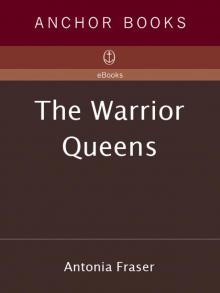 Warrior Queens
Warrior Queens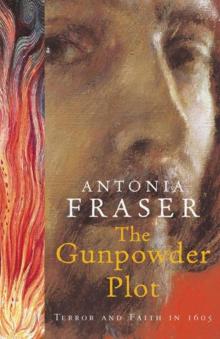 The Gunpowder Plot
The Gunpowder Plot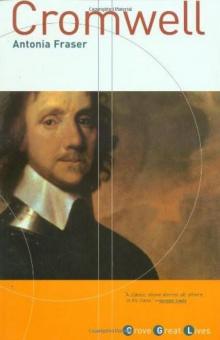 Cromwell
Cromwell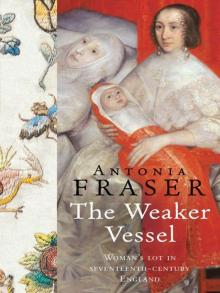 The Weaker Vessel: Women's Lot in Seventeenth-Century England
The Weaker Vessel: Women's Lot in Seventeenth-Century England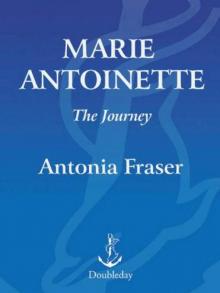 Marie Antoinette: The Journey
Marie Antoinette: The Journey Oxford Blood
Oxford Blood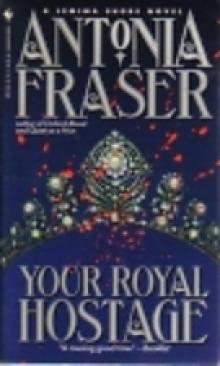 Your Royal Hostage
Your Royal Hostage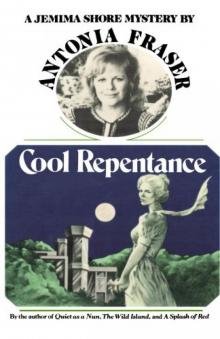 Cool Repentance
Cool Repentance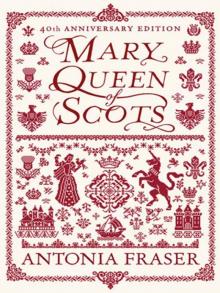 Mary Queen of Scots
Mary Queen of Scots Political Death
Political Death Royal Charles: Charles II and the Restoration
Royal Charles: Charles II and the Restoration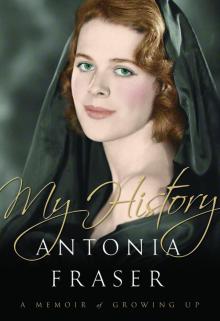 My History: A Memoir of Growing Up
My History: A Memoir of Growing Up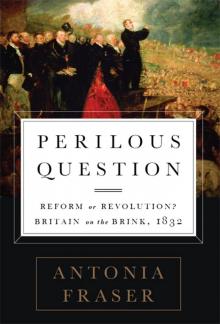 Perilous Question: Reform or Revolution? Britain on the Brink, 1832
Perilous Question: Reform or Revolution? Britain on the Brink, 1832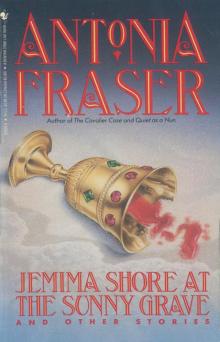 Jemima Shore at the Sunny Grave
Jemima Shore at the Sunny Grave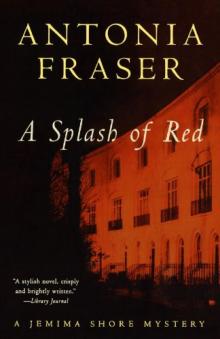 A Splash of Red
A Splash of Red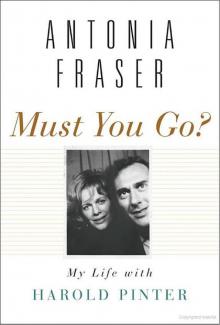 Must You Go?: My Life With Harold Pinter
Must You Go?: My Life With Harold Pinter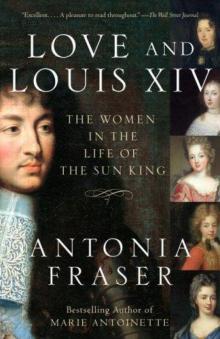 Love and Louis XIV: The Women in the Life of the Sun King
Love and Louis XIV: The Women in the Life of the Sun King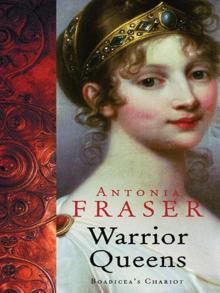 The Warrior Queens
The Warrior Queens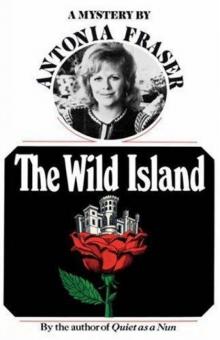 The Wild Island
The Wild Island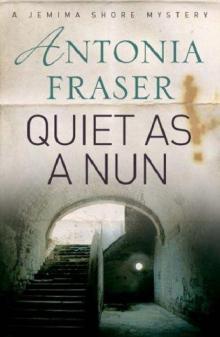 Quiet as a Nun
Quiet as a Nun Perilous Question
Perilous Question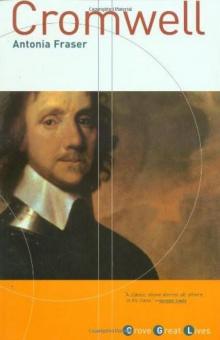 Cromwell, the Lord Protector
Cromwell, the Lord Protector Gunpowder Plots
Gunpowder Plots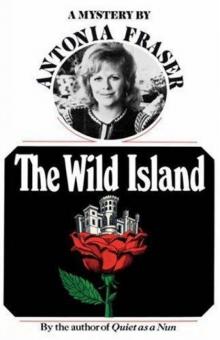 The Wild Island - Jemima Shore 02
The Wild Island - Jemima Shore 02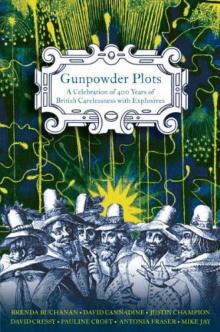 Gunpowder Plots: A Celebration of 400 Years of Bonfire Night
Gunpowder Plots: A Celebration of 400 Years of Bonfire Night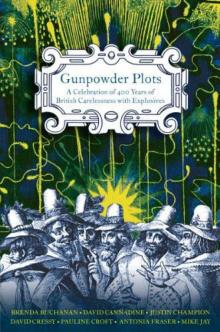 Gunpowder Plots_A Celebration of 400 Years of Bonfire Night
Gunpowder Plots_A Celebration of 400 Years of Bonfire Night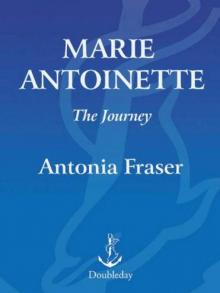 Marie Antoinette
Marie Antoinette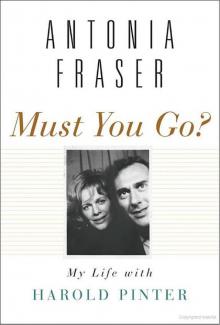 Must You Go?
Must You Go?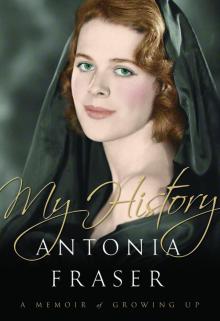 My History
My History